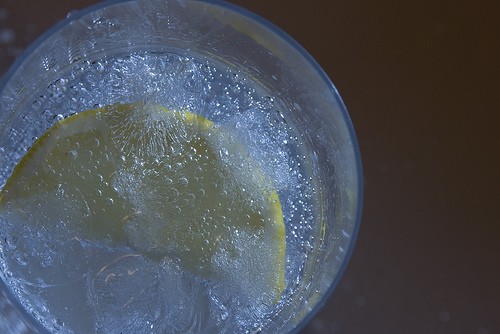
The first time I had gin was at my local bar in the town in rural Iowa where I used to live. A friend ordered gin and tonic in a place called the Checkered Flag, a place that sold Budweiser for 70 cents a glass and Grain Belt “Primo”, the world's most insipid beer-flavored beverage, for 50 cents a bottle, a place where most orders for hard liquor involved a shot of whiskey.
Needless to say, everyone stared. The bartender got down an ancient bottle of Beefeater gin and got out an equally ancient single-serving bottle of Canada Dry tonic. She drank a sip and handed it to me to try. I took a sip…
]
…and spat it on the floor. It tasted, to paraphrase my friend Nathan, like fellating a pine tree.
Fortunately, my tastes have changed, I live in a place where gin is a
common enough order, and most of all, gin, and the availability of
better gin, has come a long way since that day in the Checkered Flag. I
love gin now, to the point where drinking a vodka “martini” the other
night was like drinking cleaning solvent.
This week's Dueling Dishes is six gins: Beefeater, Bombay Sapphire,
Hendrick's, Martin Miller's, Martin Miller's Westbourne Strength and
New Amsterdam. Tanqueray, which I know well, was left out because the
cheapest bottle was too much for the budget.
Each one was tasted alone and in a gin and tonic. Gin and tonic,
incidentally, requires lemon, not lime. If you don't think so, just
order it with lemon next time and see: the lemon integrates into the
drink perfectly, whereas the lime always asserts its own flavor and
isn't harmonic with the tonic. (What terrible poetry.)
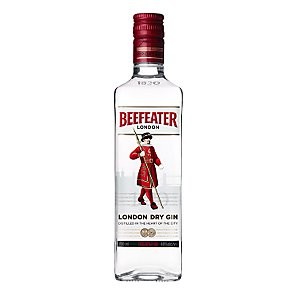
Beefeater
The cheapest of the cheap gins, this is named after the Queen's guards,
who ate beef every day when to do so was very uncommon. While juniper
is a desired, even primary taste in gin, this was oppressively junipery
and cast my mind right back to Kerry and her Iowa cocktail. There is no
sublety.
If anything, adding tonic to this made it taste even worse. The tonic
accentuated the alcoholic harshness and brought forward an unpleasant,
tinny, medicinal aftertaste. This gin is cheap, and there's a reason:
it is the Popov of the gin world.
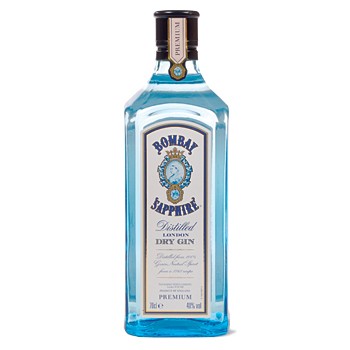
Bombay Sapphire
Known for its distinctive blue bottle (the bottle is
blue, the liquid is clear), this had enough juniper to be
assertive, with a slightly astringent bite at the back of the mouth,
but the principal flavor in this was herbal.
When mixed with tonic, the astringency moved to the middle of the
mouth. The powerful hit of herbs was diminished slightly and replaced
with a surprising fruitiness that masked the bitter edge of the tonic
water. This gin makes an excellent mixer.[
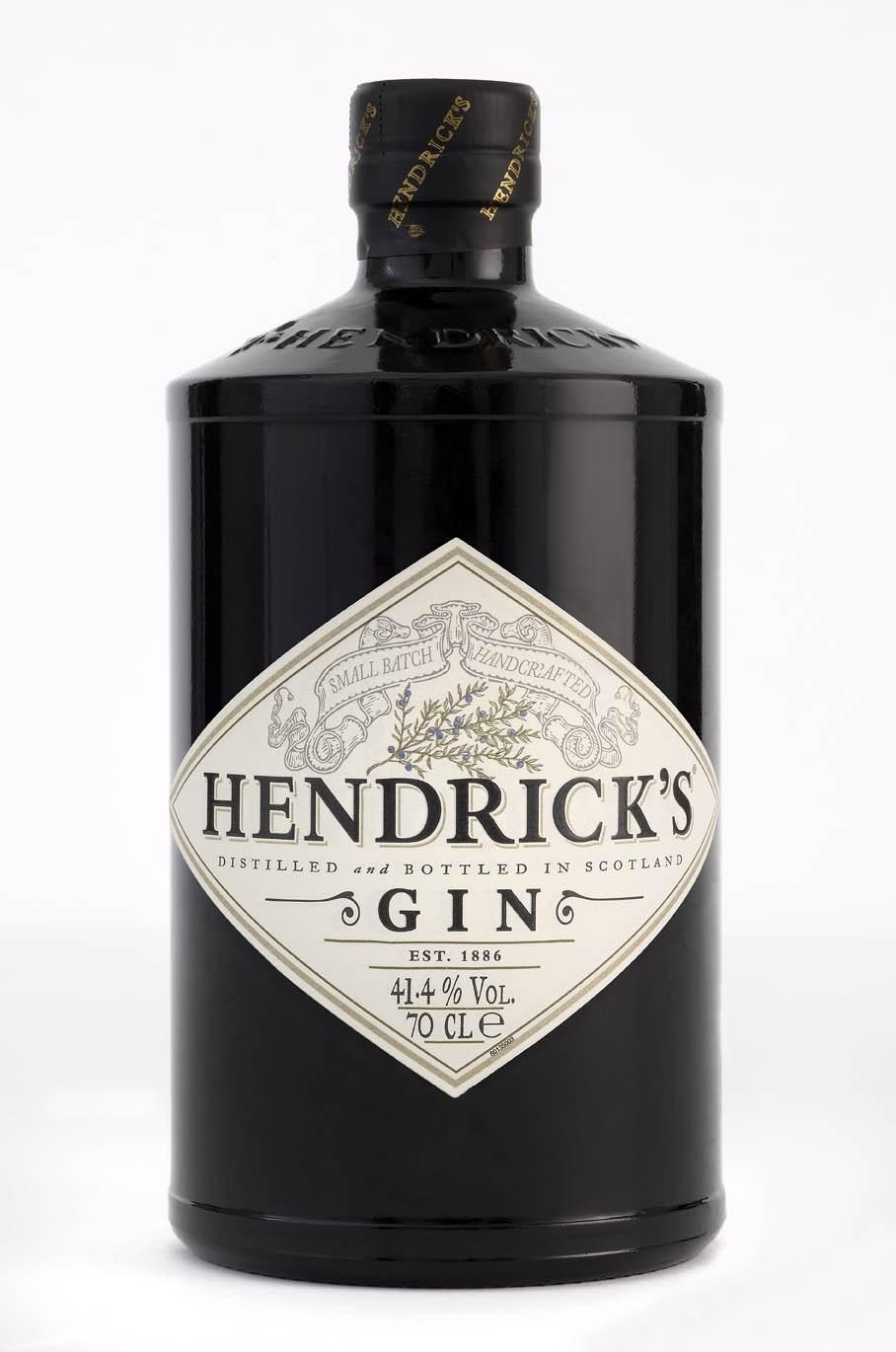
Hendrick's
The quirkiest gin in the quirkiest bottle, this is a small-batch
Scottish distiller, which may lift some eyebrows in England, but is
good news for America. Hendrick's contains essence of cucumber, which
goes surprisingly well with juniper (so well so that I have put juniper
berries in cucumber salad). This is an easy-drinking gin, with a
slightly citrus aftertaste near the middle of the mouth.
When mixed with tonic, it retains a slight astringency but the cucumber
flavor is called to the front. The distiller suggests putting cucumber
in your Hendrick's and tonic, but I've found that it needs both
cucumber and lemon. Hendrick's is not, frankly, a great choice for
martinis; the cucumber flavor is confusing with vermouth and olives.
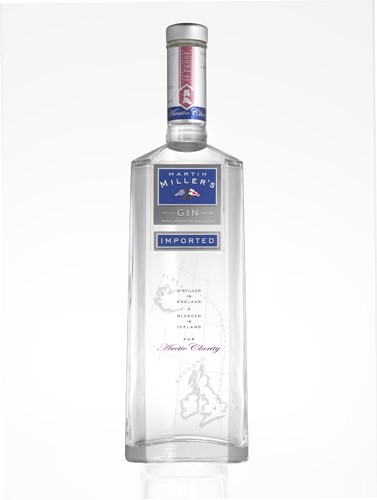
Martin Miller's
Martin Miller's makes two strengths: the standard gin is 80° (that's
40% ABV) and the Westbourne strength is slightly over 90° (45% ABV).
Another of the “herbal” gins, the first flavor is angelica, a slightly
celery-like herb from Europe. There's citrus on the back end, and a
decent amount of juniper, though it's muted. I noticed that most of the
flavor came from the front of the mouth, and my tongue tingled. This is
especially pronounced with the Westbourne strength.
Generally speaking, increasing the alcohol content of gin leads to
harshness; Martin Miller's managed to get it right. Mixed with tonic,
this was outstanding. The angelica is less intense, but it blends so
well with the tonic that it isn't missed. The Westbourne strength makes
a great martini, but don't pull a Churchhill-like move with the
vermouth; it's needed to balance the extra alcohol.
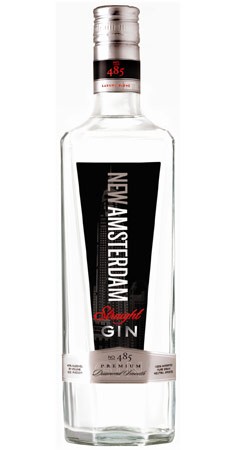
New Amsterdam
New Amsterdam is an American gin distilled right here in California. It
is not a juniper-based gin, and consequently there is almost no juniper
taste; it smells more like juniper than it tastes. The predominant
flavor is citrus, which befits a California spirit, but the gin itself
is unpleasantly tannic and the alcohol flavor is overwhelming.
Mixing with tonic yields a sweet drink that removes the tonic's
bitterness completely, more like a vodka tonic with a lot of lime in
it. I happen to like the bitterness of tonic water, so this was not a
successful drink to me, but I can see its appeal, and while I wouldn't
buy a bottle of it for myself, this is a good gateway gin for people
who are new to the spirit (perhaps coming off the vodka train).
In conclusion, the best all-around gin was Martin Miller's Westbourne
Strength; it's good on its own, it makes a fantastic G&T and it
plays well with vermouth and olives. If you are strictly buying for
G&T, go for Hendrick's, and buy some Persian cucumbers.[
Finally, I want to close with a note in response to Timothy Mangan's
post over at Food Frenzy about how to make the perfect martini. Martini
recipes are like opinions: everybody's got one and they think anyone
else's stinks. I agree with him on a lot of points but here, for your edification, is how to
make the perfect martini:
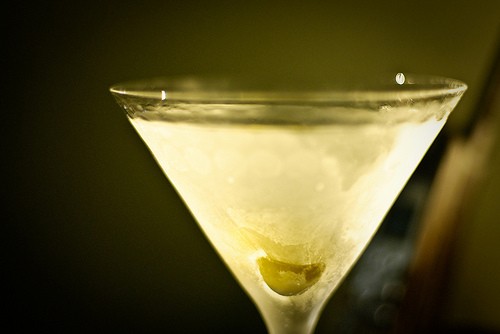
He starts off well: leave the vodka in the freezer (and, incidentally,
don't keep gin in the freezer; you won't taste the herbal infusions if
it's too cold). If you want to drink vodka, drink something that
normally contains vodka, like a Cosmopolitan or one of
those sickening fruity freshman girl drinks served in a cocktail class and called a “martini”.
Take a cocktail class and put chipped ice (or cube ice and water) in it
to cool it down. In a tall glass or a cocktail shaker, put about a cup
of chipped ice, 4 oz. Martin Miller's Westbourne Strength gin and 1 oz.
vermouth. I agree with Mr. Mangan that you don't need to go replace
your Martini and Rossi vermouth, but if you're in the market for a new
bottle anyway, try Noilly Prat instead.
Knock the ice out of the glass (or rinse with water), then put two small olives on a cocktail pick into the glass.
Don't shake the drink, or it won't be clear and it will be too diluted
and too cold to taste the drink properly. Stir the drink until the ice
has melted very slightly, then strain into the cocktail glass. Drink it
while it's cold.

